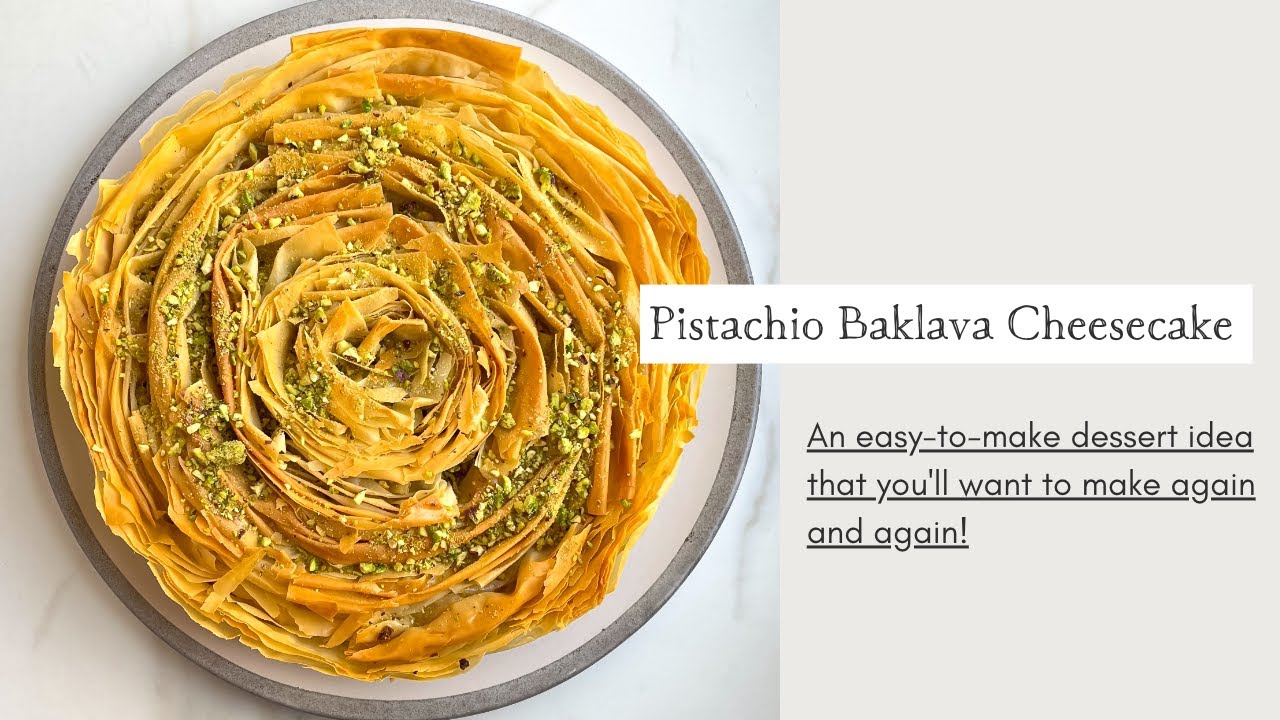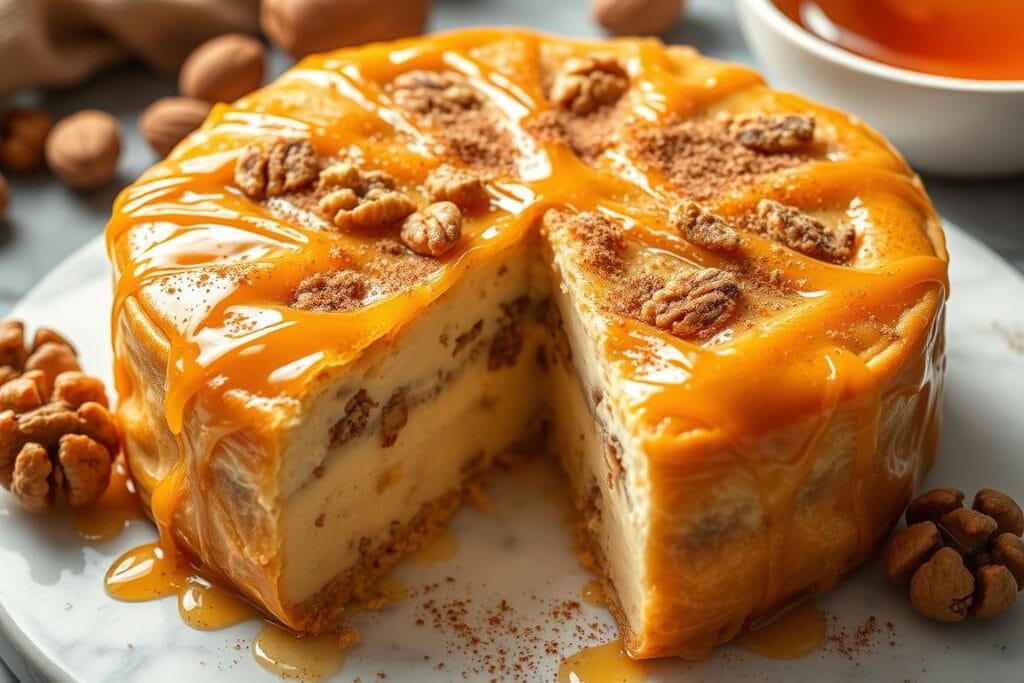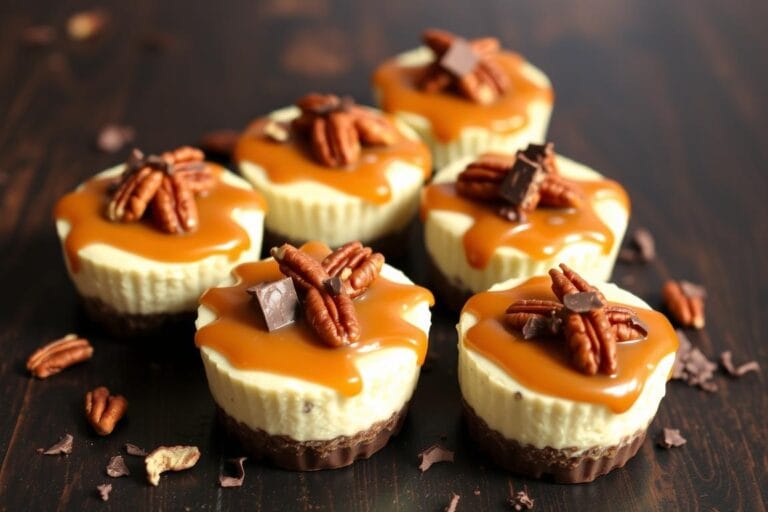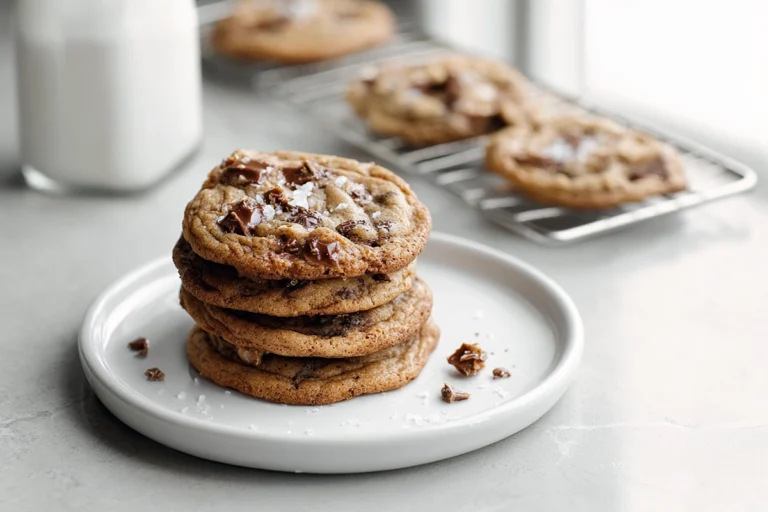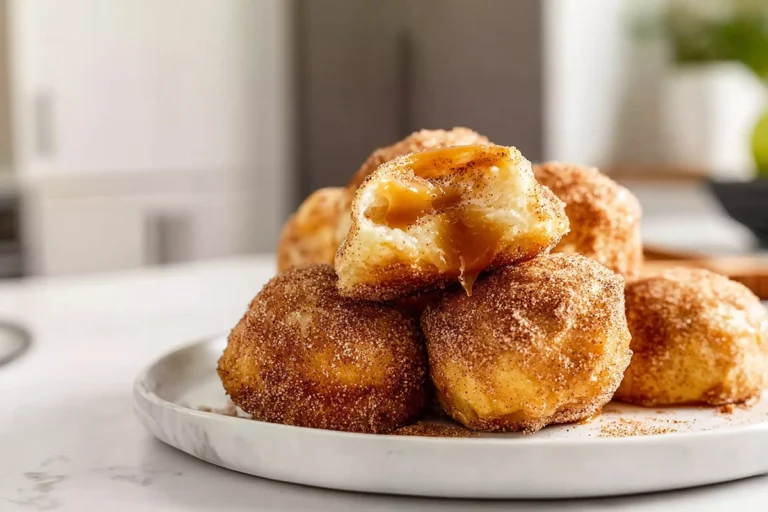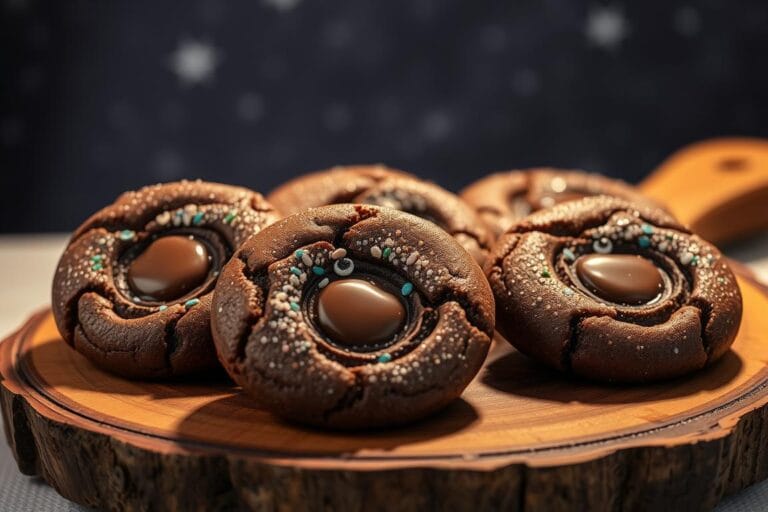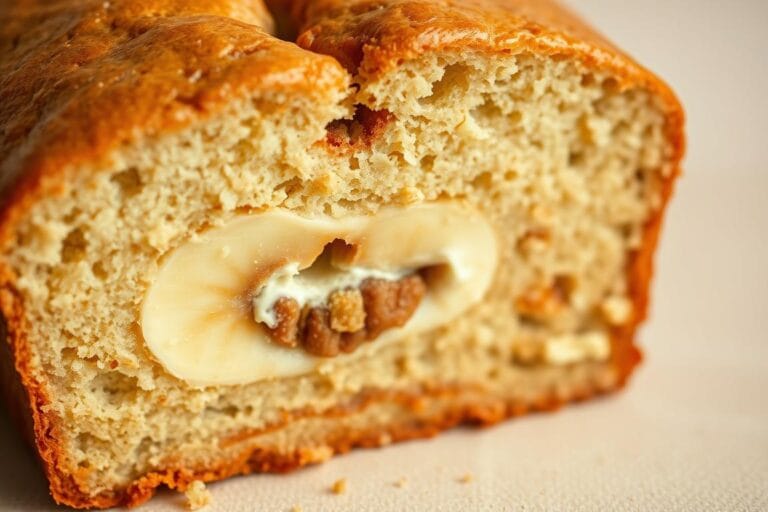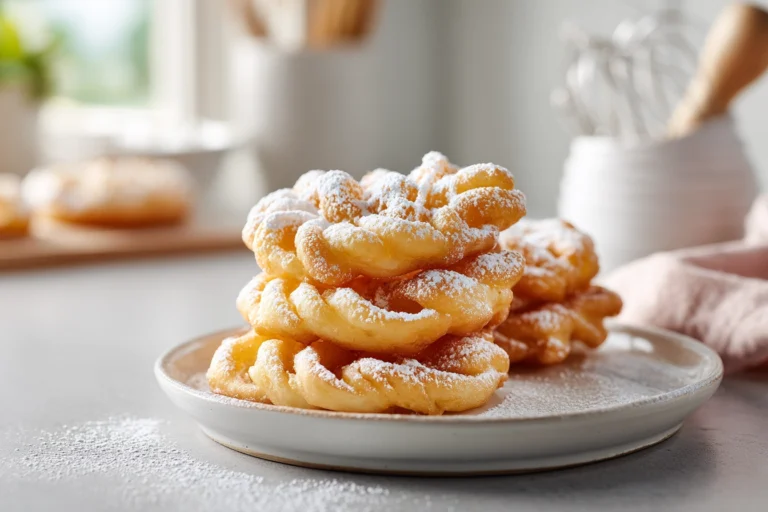Honey Baklava Cheesecake: A Heavenly Fusion
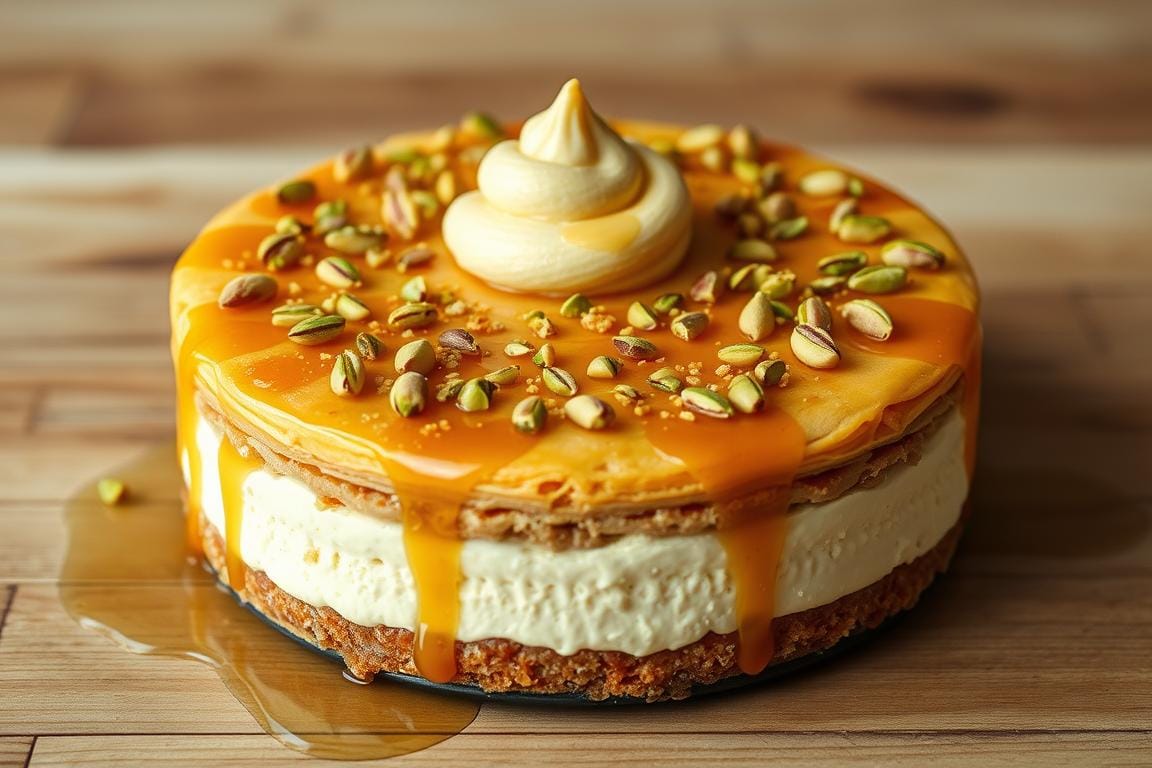
Imagine the layers of crispy, nutty baklava merging with the creamy richness of cheesecake. This heavenly fusion is not just a treat for the taste buds. It’s a journey through flavors and textures that will leave you wanting more.
The combination of honey, baklava, and cheesecake may sound unusual. But it’s a match made in culinary heaven. It offers a unique dessert experience that’s both exotic and indulgent.
You don’t have to be a dessert connoisseur to appreciate a well-crafted honey baklava cheesecake. This dessert is a symphony of textures and flavors, with layers of flaky phyllo, crunchy nuts, and smooth cheesecake.
It’s a treat that’s sure to impress, whether served at a dinner party or enjoyed as a personal indulgence. The process of making it is almost therapeutic: layering the ingredients with care and waiting for the moment it’s ready to be devoured.
Key Takeaways
- Combining baklava and cheesecake creates a unique dessert experience.
- The layers of phyllo and nuts in baklava add a satisfying crunch.
- Cheesecake brings a creamy richness to the fusion dessert.
- The use of honey adds a touch of sweetness and depth.
- This dessert is perfect for special occasions or as a personal treat.
The Story Behind Honey Baklava Cheesecake
Baklava, from the Ottoman Empire, and cheesecake, from ancient Greece, unite in Honey Baklava Cheesecake. This dessert is more than just a mix of two treats; it’s a blend of culinary evolution and cultural exchange.
Origins of Baklava
Baklava’s history is deep, tracing back to the Ottoman Empire. There, layers of phyllo dough were used to make a crispy and sweet pastry. The layers were filled with nuts, and honey held everything together, creating a sweet and satisfying treat.
Evolution of Cheesecake
Cheesecake’s roots are in ancient Greece, where it was a simple dessert. But in America, it evolved, adding new flavors and textures. It’s a creamy and rich dessert we all know and love.
Creating the Perfect Fusion
Making Honey Baklava Cheesecake is an art. It requires understanding the history, ingredients, and techniques of both baklava and cheesecake. It’s about combining the flaky, sweet baklava with the creamy cheesecake, balancing flavors and textures to create something truly special.
The Story Behind Honey Baklava Cheesecake
Baklava, from the Ottoman Empire, and cheesecake, from ancient Greece, unite in Honey Baklava Cheesecake. This dessert is more than just a mix of two treats; it’s a blend of culinary evolution and cultural exchange.
Origins of Baklava
Baklava’s history is deep, tracing back to the Ottoman Empire. There, layers of phyllo dough were used to make a crispy and sweet pastry. The layers were filled with nuts, and honey held everything together, creating a sweet and satisfying treat.
Evolution of Cheesecake
Cheesecake’s roots are in ancient Greece, where it was a simple dessert. But in America, it evolved, adding new flavors and textures. It’s a creamy and rich dessert we all know and love.
Creating the Perfect Fusion
Making Honey Baklava Cheesecake is an art. It requires understanding the history, ingredients, and techniques of both baklava and cheesecake. It’s about combining the flaky, sweet baklava with the creamy cheesecake, balancing flavors and textures to create something truly special.
Essential Ingredients for Your Masterpiece
To make a heavenly honey baklava cheesecake, you’ll need a mix of old and new ingredients. Start with a graham cracker crust for a classic base. Then, add a creamy cheesecake filling for a smooth texture.
Don’t forget the honey drizzle, which adds a sweet and tangy flavor. You’ll also need phyllo dough for the crispy layers. And, of course, a Greek-inspired cheesecake wouldn’t be complete without some Greek yogurt and lemon zest.
These ingredients will help you create a familiar and exciting cheesecake. It’s a perfect blend of flavors and textures that will impress anyone who tries it.
Kitchen Tools and Equipment Needed
To bake a Honey Baklava Cheesecake, you need the right tools. A springform pan is key for a creamy and firm cheesecake. You’ll also need mixing bowls of different sizes for the dessert’s parts.
Baking Essentials
A whisk is crucial for mixing the cheesecake batter and syrup, and a pastry brush helps with the phyllo dough. Having these tools makes baking easier.
Specialty Items
Some tools are better for a Mediterranean dessert like Honey Baklava Cheesecake. A food processor is great for the crust and nuts, and a pastry scraper helps with the phyllo dough.
Optional Equipment
Some tools are not essential, but can improve your baking. A kitchen scale ensures accurate measurements, and tools like a silicone spatula or bench scraper can also be helpful.
Preparing the Perfect Phyllo Base
You need to know how to handle phyllo dough to make the perfect phyllo base for your honey baklava cheesecake. This dough is delicate and flaky, needing careful handling for a crispy texture. Start by thawing the dough, whether it’s store-bought or homemade. Thawing it right ensures even layers and prevents tears when assembling your cheesecake.
After thawing, brush each phyllo sheet with butter or oil for a golden, crispy finish. Brushing each sheet gently but thoroughly is key. This adds flavor and helps the layers stick together, creating a beautiful base for your cheesecake.
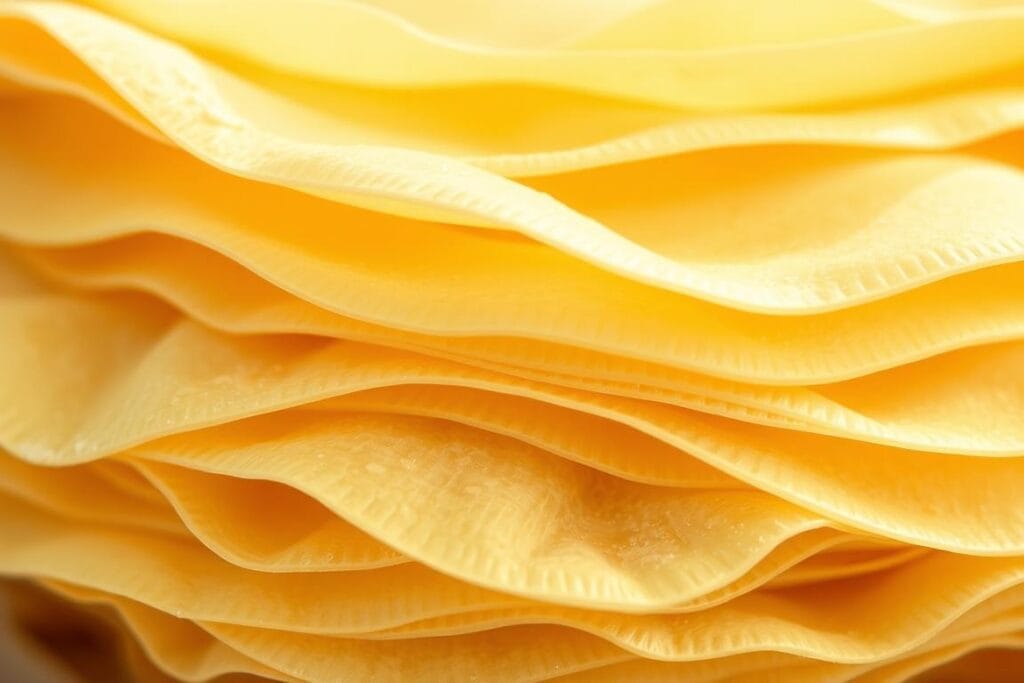
Layer the phyllo dough when it’s still slightly thawed and flexible for the best results. This makes it easier to handle and less likely to tear. Each layer adds to the dessert’s complexity and flavor as you build your cheesecake. Choose high-quality butter or oil for brushing, as it greatly affects the cheesecake’s taste.
With the right technique and ingredients, you can create a phyllo base perfect for your honey baklava cheesecake. This dessert will take you to a whole new level. Follow these tips to make a Greek-inspired cheesecake that will wow everyone who tries it.
Crafting the Creamy Cheesecake Filling
Making the perfect cheesecake filling is an art. It requires precision, patience, and a thorough knowledge of the ingredients. The filling consists of cream cheese, sugar, eggs, and vanilla. Mixing these ingredients correctly gives the cake a smooth, creamy texture.
This texture is key for a delicious Honey Baklava Cheesecake.
Choosing the Right Cheese
The type of cheese is crucial for the filling. Cream cheese is the top choice for its creamy texture and tangy taste, but you can also try mascarpone or ricotta for different flavors and textures.
The quality of the cheese greatly affects the taste and texture. So, choose wisely.
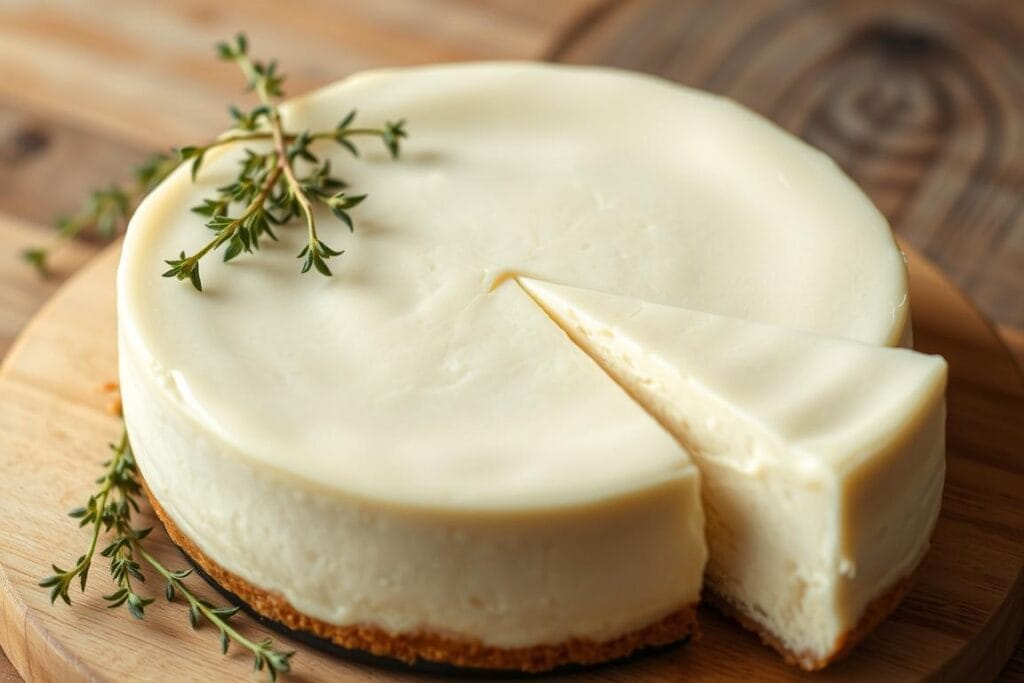
Mixing Techniques
The way you mix the filling affects its texture and taste. Beat the ingredients until they’re smooth and well combined, ensuring all flavors are evenly distributed.
Using room temperature ingredients or whipping can make the filling lighter and more decadent. Try different methods to find the perfect mix for your cheesecake.
Flavor Enhancement Tips
To make your cheesecake filling even better, add some extra touches. Citrus zest, extracts, or some salt can enhance the flavor. Using high-quality vanilla or premium cheese can also make a big difference.
These tweaks let you tailor the flavor to your liking. This makes your cheesecake truly special.
Focus on the details to make your cheesecake filling stand out. Choose the right ingredients, master your mixing, and add special touches. With these steps, you’ll create a dessert that will wow everyone.
The Art of Layering Your Honey Baklava Cheesecake
Assembling your honey baklava cheesecake is a delicate task that requires finesse. Start with a crisp, flaky phyllo base, which is the foundation of your dessert.
Layering is not just about stacking ingredients; it’s an art form that requires patience and a gentle touch. Begin by layering the phyllo, ensuring it’s evenly spread and not overlapping. Then, add a layer of nuts, like walnuts and almonds, for crunch and flavor.
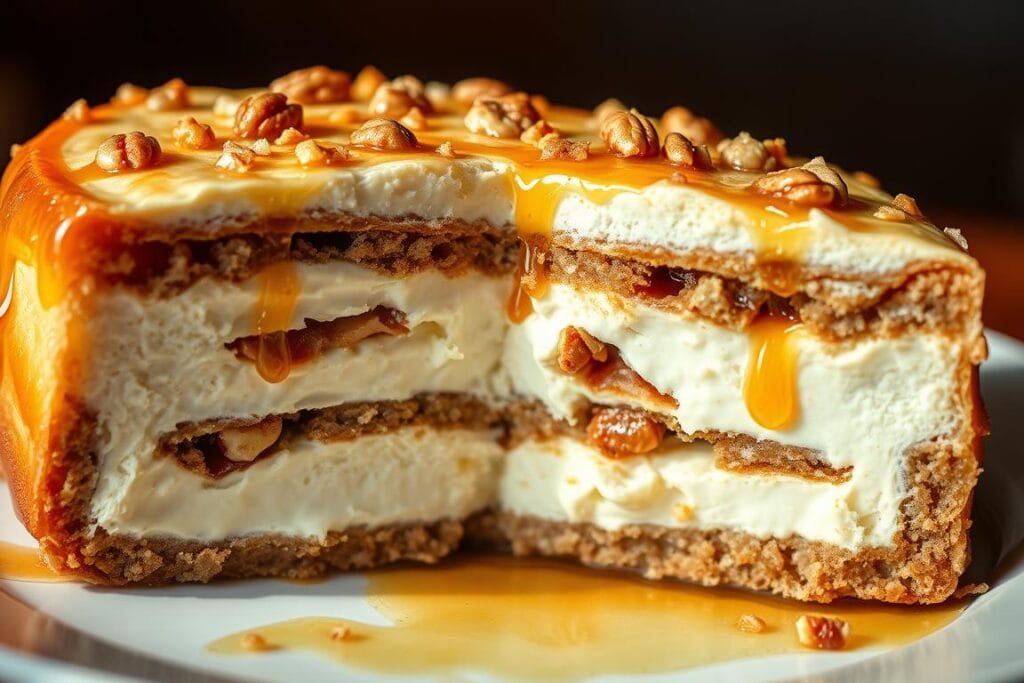
Next, add the cheesecake filling. It should be smooth and rich, complementing the nuts and phyllo. The key to a great honey baklava cheesecake is in the harmony of its layers. Continue adding phyllo and nuts, each layer enhancing the flavor and texture.
The final touch is a drizzle of honey syrup. It should be warm and fragrant, bringing all the elements together in a sweet, sticky harmony.
“The art of making a honey baklava cheesecake lies in the patience and the precision of its layering.”
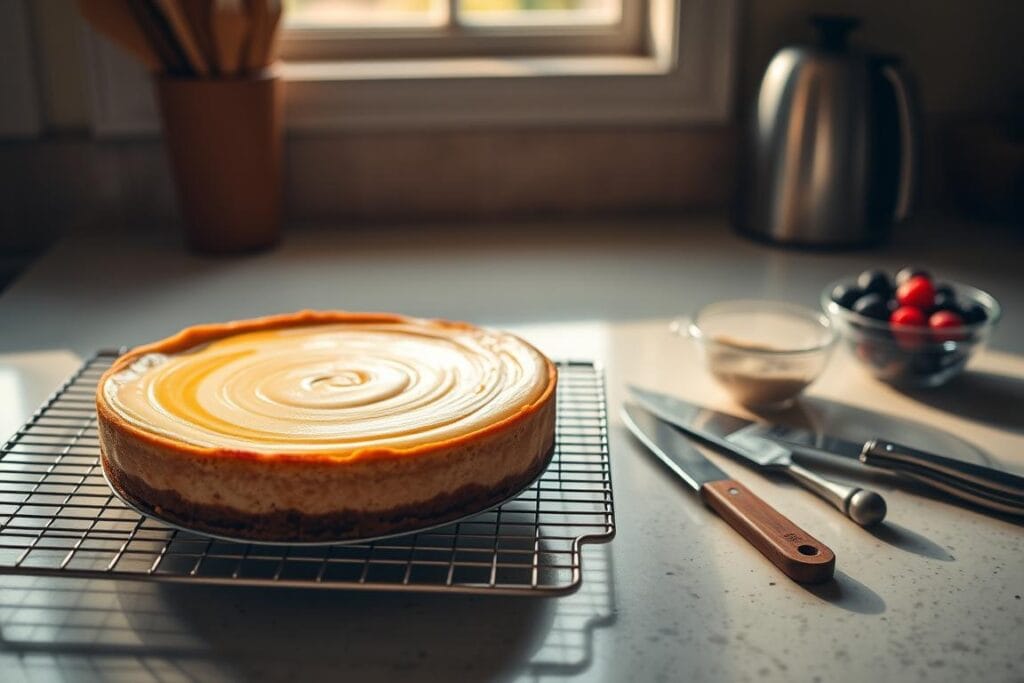
Baking Temperature and Timing Guidelines
Following the right baking temperature and timing guidelines is crucial to ensuring your honey baklava cheesecake turns out perfectly. Baking this dessert masterpiece requires precision to achieve the ideal texture and flavor. You need to preheat your oven to the correct temperature, understand the different stages of the baking process, and allow the cheesecake to cool properly after baking. Let’s dive into the specifics to help you bake your cheesecake to perfection.
First, preheating your oven to the right temperature is essential. Preheat your oven to 350°F (175°C) for a homemade cheesecake. It’s not just about the temperature; understanding the baking stages is crucial for a successful dessert recipe. You need to know when to adjust the temperature or when to check on your cheesecake’s progress. Moreover, a proper cooling process is vital to setting the cheesecake and preventing it from cracking after baking. By following these guidelines, you’ll be on your way to creating a sweet treat that everyone will love.
Preheating Instructions
Preheating your oven correctly is the first step towards a perfectly baked honey baklava cheesecake. Ensure your oven is at the right temperature before you put your cheesecake in.
Baking Stages
Understanding the different stages of baking is crucial. You must know when your cheesecake is lightly browned on the edges and set. This usually happens around 45-50 minutes into baking at 350°F.
Cooling Process
After baking, it is essential to let your cheesecake cool down properly. This helps set the cheesecake and prevent cracks. A gradual cooling process is recommended.

Follow these baking temperature and timing guidelines to achieve a perfectly baked honey baklava cheesecake. Remember, practice makes perfect, so don’t be discouraged by initial attempts.
Creating the Honey Syrup Drizzle
You need a special honey syrup drizzle to make your honey baklava cheesecake stand out. This drizzle is key to a Mediterranean dessert that’s both sweet and complex. It’s made by mixing pure honey, water, and a bit of lemon juice, then simmering until it’s just right.
The quality of the honey matters a lot. Choose a high-quality, pure honey that has not been tampered with. Use clean water and a squeeze of fresh lemon juice for balance. This mix creates a sweet, tangy syrup perfect for your cheesecake.
Mix 1/2 cup of honey with 1/4 cup of water in a saucepan to make this syrup. Add a tablespoon of lemon juice for a hint of acidity. Heat it over medium heat, stirring occasionally, until it thickens slightly. This should take about 5-7 minutes.
As it cooks, the syrup will develop a rich, caramel flavor. This is what makes your cheesecake truly special. It adds depth and complexity that’s hard to find in other desserts.
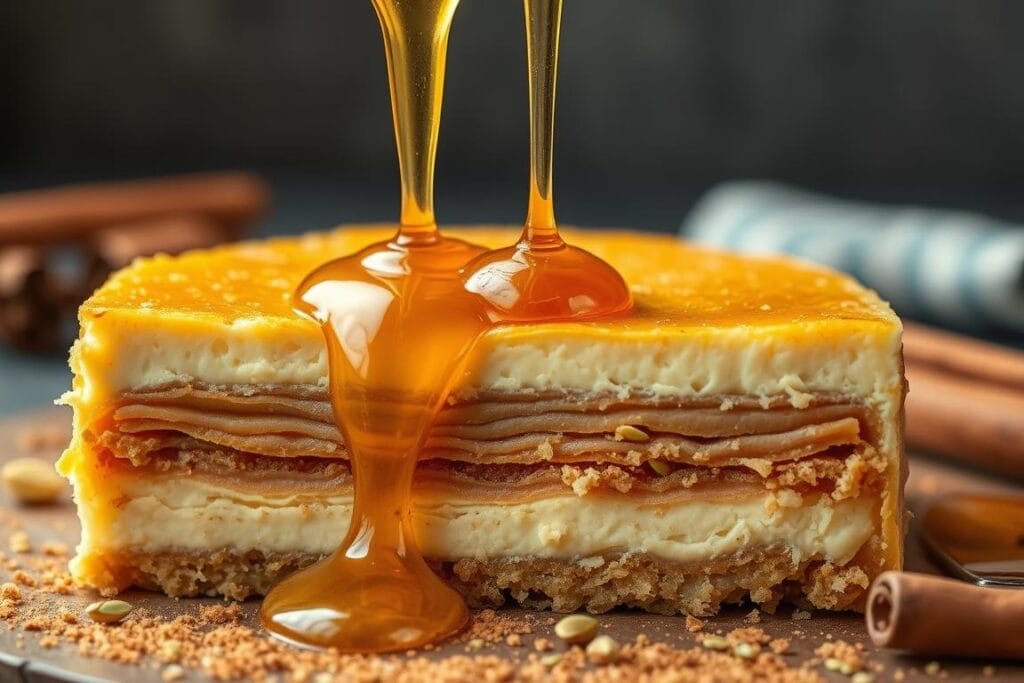
The honey syrup drizzle is also versatile. Add cinnamon for a warm flavor, citrus zest for a bright note, or even a splash of liqueur for a grown-up twist. The key is to experiment and find what you like best.
Adding this drizzle to your cheesecake is the final touch that makes it unforgettable. Drizzle it over the top and watch the flavors come together beautifully.
Presentation and Serving Suggestions
A beautifully presented honey baklava cheesecake will impress your guests and leave a lasting memory. The presentation of your dessert is key to a great dining experience.
Plating Techniques
There are many ways to plate your honey baklava cheesecake. Dusting it with powdered sugar is simple yet elegant. The powdered sugar’s sweetness contrasts beautifully with the cheesecake’s richness.
Alternatively, arrange fresh fruits on top or around the cheesecake. Fresh fruits add color and a refreshing contrast. Use seasonal fruits for a fresh and exciting presentation.
Garnish Ideas
There are endless garnish options for your honey baklava cheesecake. Drizzle it with honey syrup for extra sweetness or sprinkle chopped nuts for crunch. For a decadent touch, top it with ice cream or whipped cream.
The garnish should complement the cheesecake without overpowering it. Consider edible flowers or a sprinkle of cinnamon or cocoa powder for a visually appealing presentation.
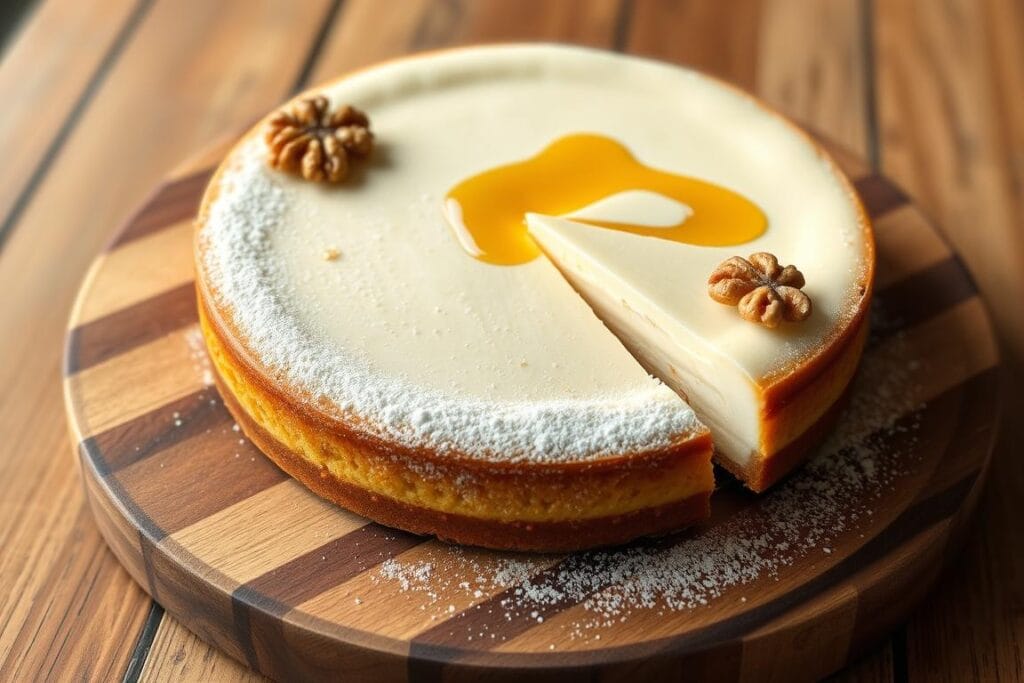
Storage and Shelf Life
After making a honey baklava cheesecake, it’s important to store it properly so it stays tasty. You can keep it in the fridge for 3-4 days or freeze it for longer.
For freshness, use an airtight container. This slows down bacteria and keeps it good longer.
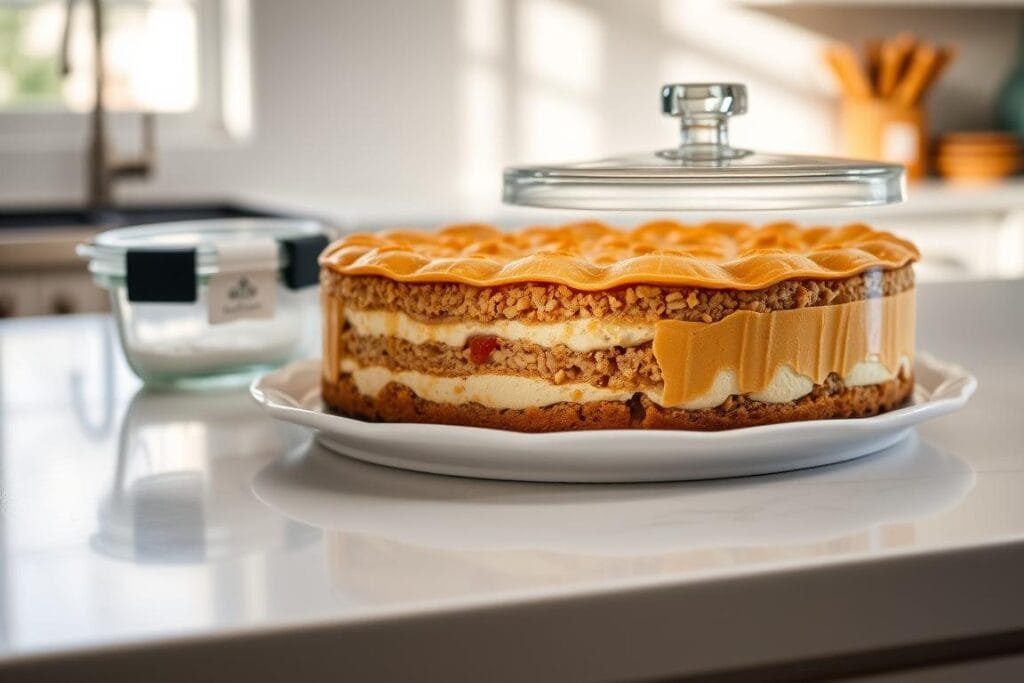
To freeze, wrap it well in plastic or foil to prevent freezer burn. It can stay frozen for 2 months. Thaw it in the fridge or at room temperature before serving.
Storing it right keeps the cheesecake fresh and safe to eat.
Troubleshooting Common Issues
Making a homemade cheesecake like honey baklava can be tricky. You might face problems like a dense cheesecake, burnt phyllo, or syrup that’s too thick or too thin. Knowing how to fix these issues is key to a perfect dessert.
Texture Problems
Texture issues are common. A dense or dry cheesecake might result from overmixing or the wrong oven temperatures. To fix this, gently mix the ingredients and check your oven’s temperature. If the cheesecake is too runny, the cream cheese wasn’t room temperature, or the eggs were too cold.
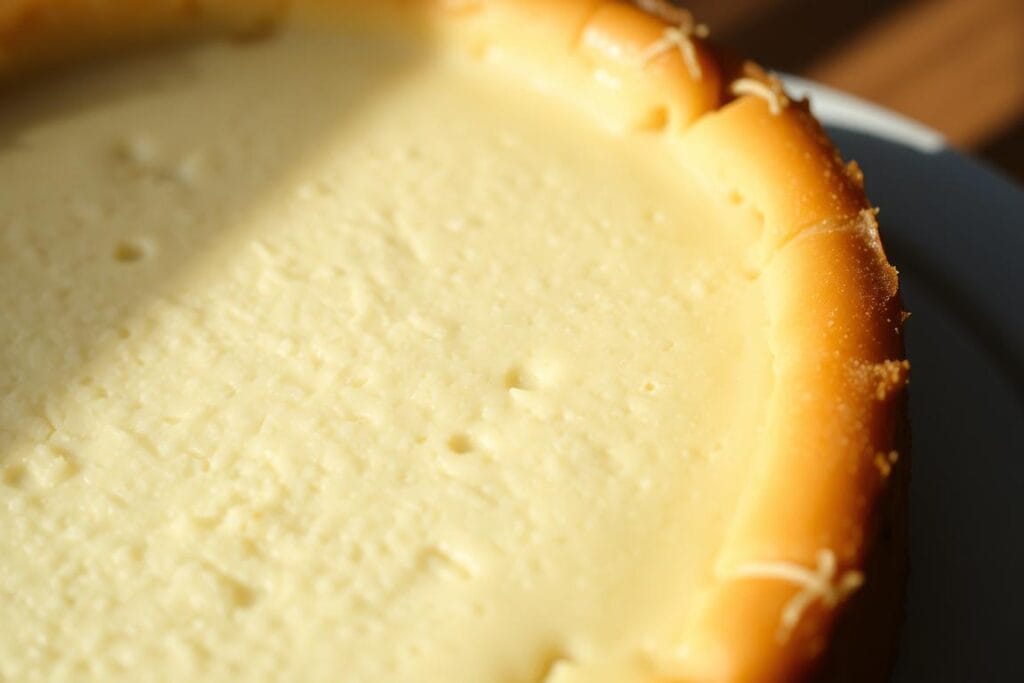
Phyllo dough can also be a problem. If it’s overworked or not kept at the right temperature, it might become brittle or break. Handling the dough gently and keeping it in the right conditions is crucial.
Baking Challenges
Baking phyllo layers can be tricky. Overcooked or undercooked phyllo might be due to wrong oven temperatures or uneven layers. Check your oven temperature and layer the phyllo evenly. Sometimes, rotating the baking sheet can solve uneven heating issues.
Syrup Solutions
Honey syrup can also be a challenge. If it’s too thick, it might have been cooked too long or at too high a heat. It might not have cooked enough or been diluted too much if it’s too thin. Adjust the cooking time or the honey ratio to get it right. Keep an eye on the syrup’s consistency and adjust as needed.
Seasonal Variations and Adaptations
You don’t have to stick to the original recipe; experiment with seasonal variations to give your Honey Baklava Cheesecake a unique twist. One of the joys of making Honey Baklava Cheesecake is the freedom to adapt it to any season or occasion. Using seasonal ingredients ensures your dessert stays fresh and exciting and connects it to the time of year, making it a perfect treat for holidays or special events. For example, you can incorporate autumnal spices like cinnamon, nutmeg, or allspice into the cheesecake or baklava layers during the fall. In the winter, a hint of peppermint can give your Honey Baklava Cheesecake a festive touch.
Consider using fresh citrus zest or berries for spring to add a bright, citrusy flavor or a sweet, fruity twist. In the summer, you can use stone fruits or berries at their peak to infuse your cheesecake or baklava with the season’s sweetness. The beauty of this dessert lies in its versatility, allowing you to get creative with whatever ingredients are fresh and available during any given season.
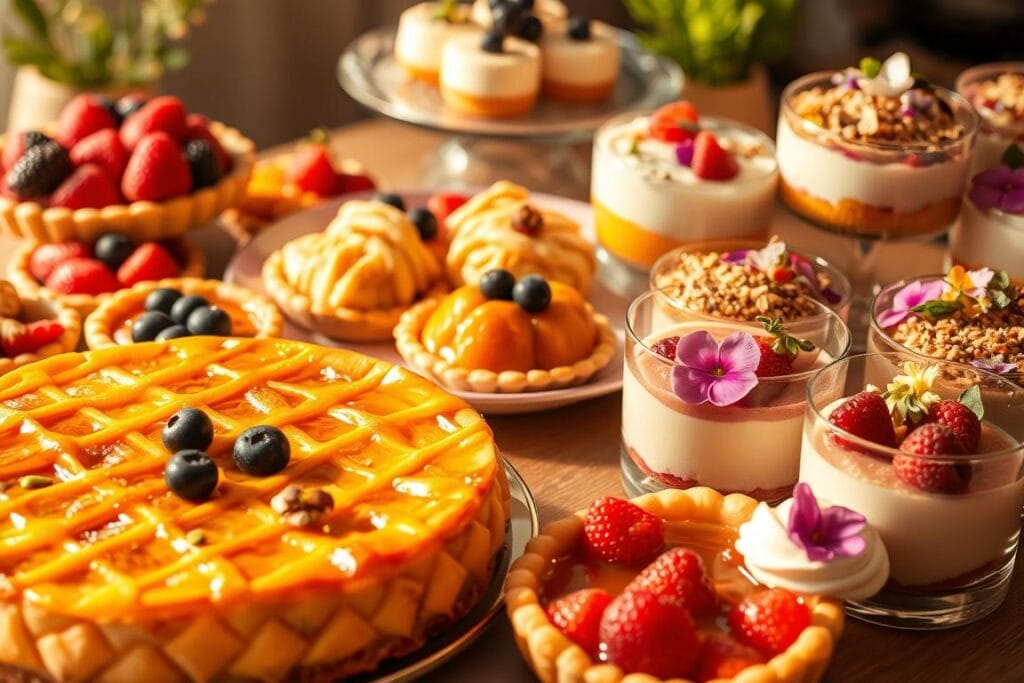
Let’s explore some ideas for adapting your Honey Baklava Cheesecake to the seasons. A walnut or pecan crust can add a delightful crunch and flavor contrast to your cheesecake in autumn. For a warm, aromatic flavor, you can also spice up your honey syrup with cinnamon, nutmeg, or cardamom. For a winter-themed Honey Baklava Cheesecake, crushed candy canes or peppermint on top can make it a festive treat. When citrus fruits are in season in spring, you can infuse your cheesecake with lemon or orange zest for a refreshing twist or use citrus in your honey syrup for a bright, citrusy note.
- Use autumnal spices for a cozy fall flavor
- Infuse your cheesecake with fresh spring citrus for a bright twist
- Add a hint of peppermint for a festive winter dessert
- Experiment with summer fruits for a sweet, fruity treat
These are just a few ideas for seasonal variations. The possibilities are endless, and the best part is, you can experiment with different combinations to make your Honey Baklava Cheesecake truly unique and tailored to the season.
Health and Dietary Considerations
Enjoying a honey baklava cheesecake is a treat, but knowing its nutritional value is key. Making a cheesecake that’s tasty and meets dietary needs shows care, especially for those with special diets.
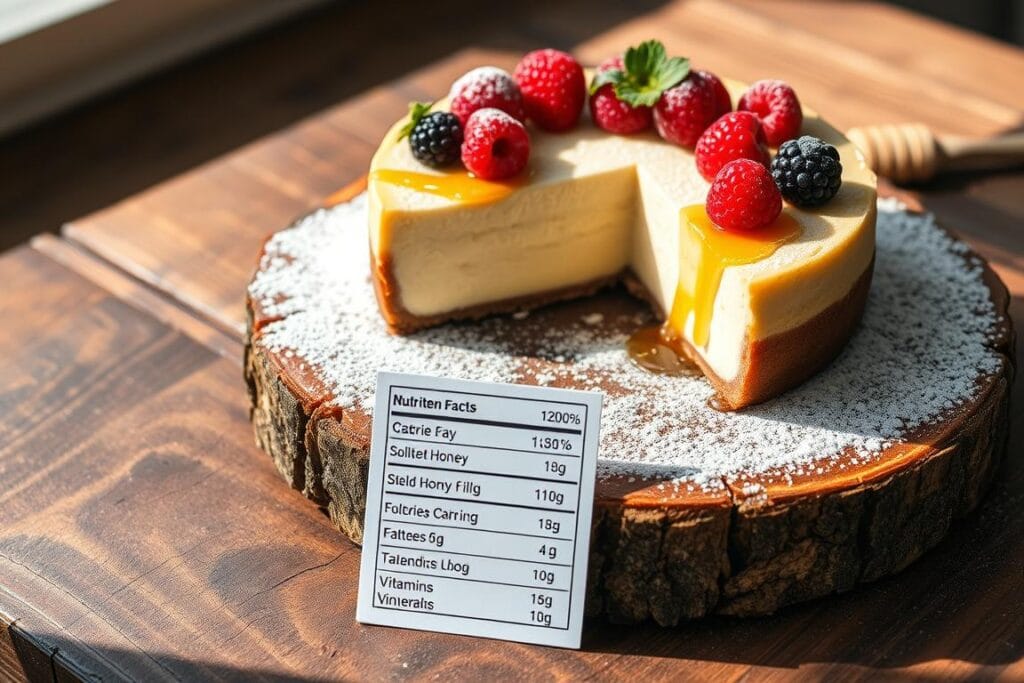
This cheesecake is high in calories, sugar, and fat. A single piece can have many calories, mostly from sugar and fat. But you can tweak it to fit different diets. For example, reduce sugar, use other sweeteners, or change the fat type.
Nutritional Information
Knowing what’s in your dessert is important. The honey baklava cheesecake has a mix of ingredients, each of which affects its nutritional value. Knowing the calories, fats, and sugars in a serving helps you make better choices.
Dietary Modifications
Modifying a dessert like honey baklava cheesecake is thoughtful. You can lessen sugar, use different ingredients, or change fats. This makes the cheesecake more inclusive so that everyone can enjoy it.
Pairing Suggestions and Accompaniments
Honey baklava cheesecake is a treat that invites you to get creative. Its rich texture and sweet honey flavor make it perfect for pairing with various accompaniments. Try pairing it with coffee, tea, nuts, fruits, or chocolates for a unique experience.
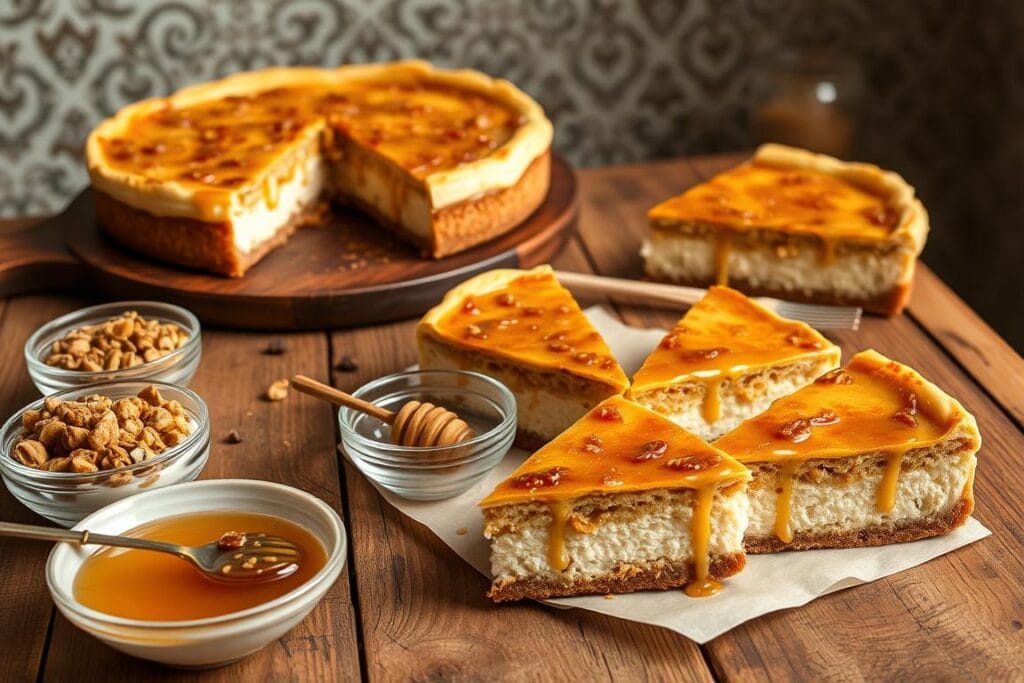
For a classic pairing, try honey baklava cheesecake with coffee. The coffee’s boldness balances the cheesecake’s richness. A soothing cup of tea can also provide a nice contrast to the dessert’s sweetness. If you’re feeling adventurous, a glass of wine can add a sophisticated touch, enhancing the dessert’s flavors.
Exploring Unique Pairings
Don’t be afraid to try new pairings. Serving honey baklava cheesecake with caramelized nuts or chocolate sauce can add a delightful twist. Fresh fruits or a fruit compote can also introduce a refreshing acidity, balancing the dessert’s richness.
| Pairing Suggestion | Description | Flavor Profile |
|---|---|---|
| Coffee | A classic combination | Bold, rich |
| Nuts | Adds a crunchy texture | Nutty, crunchy |
| Tea | For a soothing contrast | Floral, smooth |
| Wine | A sophisticated twist | Fruity, complex |
| Fruits | Introduces freshness | Fruity, acidic |
| Chocolates | For a decadent treat | Cocoa-rich, sweet |
Pairing honey baklava cheesecake with the right accompaniments is all about experimentation. Whether you choose classic pairings or try something new, the goal is to enjoy the process and the final result.
“The way to get started is to quit talking and begin doing.” – Walt Disney
Conclusion
As you finish making the honey baklava cheesecake, you’ve done more than follow a recipe. You’ve opened a door to a world where flavors meet tradition and innovation. This dessert mixes the crispy, nutty layers of baklava and the creamy cheesecake. It’s a masterpiece that will wow anyone who tries it.
You’ve learned about the key ingredients, tools, and techniques needed for this dessert. Each step was important, from making the perfect phyllo base to creating the creamy cheesecake filling. The art of layering, the right baking temperature, and creative presentation all matter. When you see your dessert, remember it’s not just about following a recipe. It’s about the love and care you put into every layer and bite.
Now, you’re ready to start your baking journey. Whether you’re experienced or new to baking, the honey baklava cheesecake awaits you. It promises a dessert experience that’s both unique and unforgettable. So, take this final step and let your creation guide you to a sweet treat that will be cherished.
FAQ
What is honey baklava cheesecake?
Honey baklava cheesecake is a dessert that combines the layers of baklava with a creamy cheesecake. It’s topped with a honey syrup drizzle. This creates a perfect mix of textures and flavors.
What are the essential ingredients for honey baklava cheesecake?
You’ll need phyllo dough, nuts, cheese, honey, and sugar. Using high-quality ingredients is key for the best taste and texture.
How do I prepare the phyllo base for the cheesecake?
Start by thawing the phyllo dough. Then, layer it with butter or oil and sprinkle with nuts. This adds crunch and flavor. Make sure the layers are crisp and golden.
What type of cheese is best for the cheesecake filling?
Cream cheese is the best choice for the filling. It’s creamy and has a rich flavor. You can mix it with other cheeses for a unique taste.
How do I layer the honey baklava cheesecake?
Begin with a layer of phyllo dough. Add a nut layer, then the cheesecake layer. Finally, top it with another layer of phyllo or a honey syrup drizzle. Make sure the layers are smooth and evenly spread.
How do I bake the honey baklava cheesecake?
Preheat the oven to the right temperature. Bake the cheesecake in stages. Start with the phyllo layer, then add the cheesecake layer. Let it cool properly to avoid cracking or overcooking.
How do I make the honey syrup drizzle?
To make the honey syrup drizzle, simmer honey with water or other liquids. This creates a smooth, sticky syrup. It adds a final layer of sweetness and flavor to the cheesecake.
How should I store leftover honey baklava cheesecake?
Store leftover cheesecake in the refrigerator for a few days or freeze it for longer. Make sure it’s wrapped or covered properly to keep it fresh.
Can I make variations to the honey baklava cheesecake for dietary restrictions?
Yes, you can modify the recipe for dietary restrictions. Use alternative ingredients, reduce sugar, or change the type of nuts and cheese.
What are some good pairing suggestions for honey baklava cheesecake?
Enjoy honey baklava cheesecake with coffee, tea, or dessert wines. It also pairs well with fresh fruits, whipped cream, or chocolate for a luxurious treat.
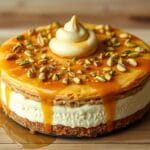
Honey Baklava Cheesecake: A Heavenly Fusion
- Total Time: 5 hours 20 minutes (includes chilling)
- Yield: 12 slices 1x
- Diet: Vegetarian
Description
Honey Baklava Cheesecake is a luxurious dessert that blends the crispy layers of traditional baklava with the creamy richness of cheesecake. Infused with fragrant honey and warm spices, this indulgent treat offers a perfect harmony of textures—crunchy, creamy, and syrupy sweet. Whether served at a holiday gathering or a casual celebration, it’s a show-stopping fusion dessert that impresses every time.
Ingredients
For the Phyllo Base and Nut Layers:
12–16 sheets phyllo dough, thawed
½ cup unsalted butter, melted
1 cup chopped walnuts
½ cup chopped pistachios
1 tsp ground cinnamon
For the Cheesecake Filling:
16 oz cream cheese, softened
¾ cup granulated sugar
3 large eggs
1 tsp vanilla extract
½ cup Greek yogurt or sour cream
1 tbsp lemon zest
For the Honey Syrup:
½ cup honey
¼ cup water
1 tbsp fresh lemon juice
Optional: pinch of cinnamon or splash of orange blossom water
Instructions
-
Prepare Phyllo and Nut Layers
Brush a greased springform pan with melted butter. Layer 6–8 sheets of phyllo, brushing each with butter. Sprinkle with a mixture of chopped nuts and cinnamon. -
Make Cheesecake Filling
In a large bowl, beat cream cheese and sugar until smooth. Add eggs one at a time, then mix in vanilla, Greek yogurt, and lemon zest. Pour over the nut layer. -
Top with More Phyllo
Add 6–8 more phyllo sheets on top, brushing each with butter. Tuck edges gently. -
Bake
Bake at 350°F (175°C) for 45–50 minutes or until the center is set and top is golden. -
Cool and Add Syrup
Let the cheesecake cool. Simmer honey, water, and lemon juice for 5–7 minutes. Drizzle warm syrup over the cooled cheesecake. -
Chill and Serve
Refrigerate for at least 4 hours before slicing. Garnish with extra nuts or powdered sugar if desired.
Notes
Keep phyllo covered with a damp towel while working to prevent drying out.
Use a sharp serrated knife to slice through the crisp phyllo layers.
Add orange zest, cardamom, or rosewater for Middle Eastern flair.
Serve with whipped cream or seasonal fruits for added elegance.
- Prep Time: 30 minutes
- Cook Time: 50 minutes
- Category: Dessert
- Method: Baking
- Cuisine: Fusion (Greek/Mediterranean & American)
What Are Our Readers Saying?
There are no reviews yet. Be the first one to write one.

